
Today, it is impossible to talk about the general economy of the United States without mentioning the DJIA. Every few years, companies are added and removed. Each year, new industries pop up. Old industries slowly fade away. Ever wonder what the original ‘dirty dozen’ were and where they are now? With some research, I’ve compiled the list of the original DOW Jones companies, their successors, and a brief history:
American Cotton Oil

In the 1800s, mill owners in Texas and Arkansas banded together to regulate the price of cottonseed oil. People sued and it was reorganized as a corporation. Thus, it became the American Cotton Oil corporation. Later on, it merged with Best Foods Inc (Food company) partially sold off other stake to Kraft and Unilever. Today, its related companies are Kraft Foods Group Inc (NYSE:KRFT), Unilever (NYSE:UL), and Ingredien (NYSE:INGR)(formerly Corn Products International). The main descendant is Unilever which is currently at over $100 billion market cap.
Industry: Non-Cyclical Consumer Goods & Services
Sector: Food Processing
*Cottonseed oil is a type of cooking oil.
American Sugar Refining Company
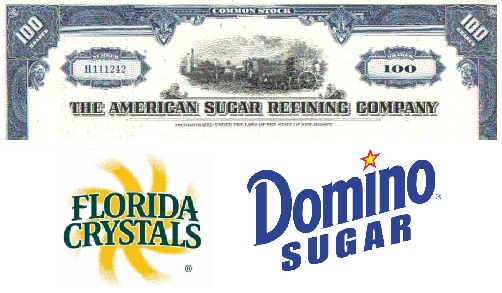
It was formed in 1891 with $50 million in capital and by 1907, it controlled 98% of the sugar processing business in US. It renamed itself to Domino Sugar in 1900. Then it was acquired by British company Tate & Lyle and then sold to ASR Group (owned mostly by Fanjul Brothers Corp).
Industry: Non-Cyclical Consumer Goods & Services
Sector: Food Ingredients
American Tobacco Company
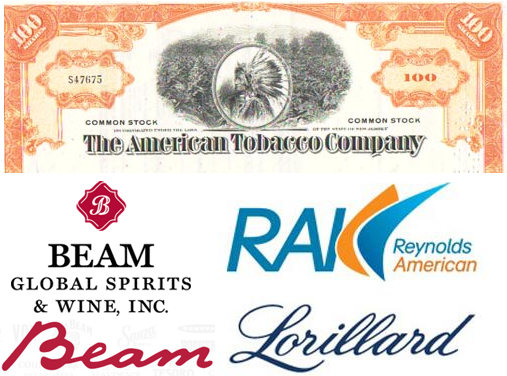
It was founded in 1891 by merging various tobacco companies. In 1911, it was forced to dissolve into 4 companies. Today, they are Beam Inc (NYSE:BEAM)(formerly Fortune Brands), Reynolds American (NYSE:RAI), Vector Group (NYSE:VGR), Lorillard (NYSE:LO)
Industry: Non-Cyclical Consumer Goods & Services
Sector: Tobacco Industry
Chicago Gas
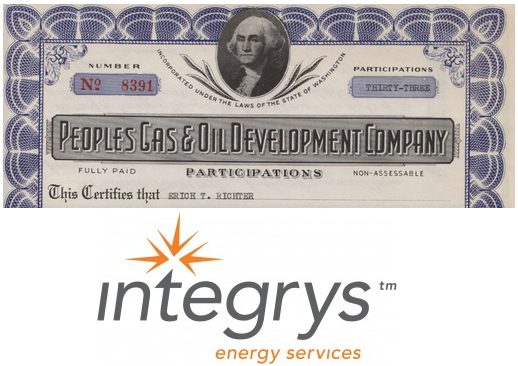
It started in 1849 as a natural gas delivery supplier. After mergers and acquisitions, it is named Integrys Energy Group (NYSE:TEG). Today it’s market cap is just under $5 billion and still serves the Chicago region.
*It is interesting to note that gas stoves commercialized in 1850s, which is how this company took off and inducted into the DJIA.
Industry: Utilities
Sector: Multi-line Utilities Industry
Distilling & Cattle Feeding
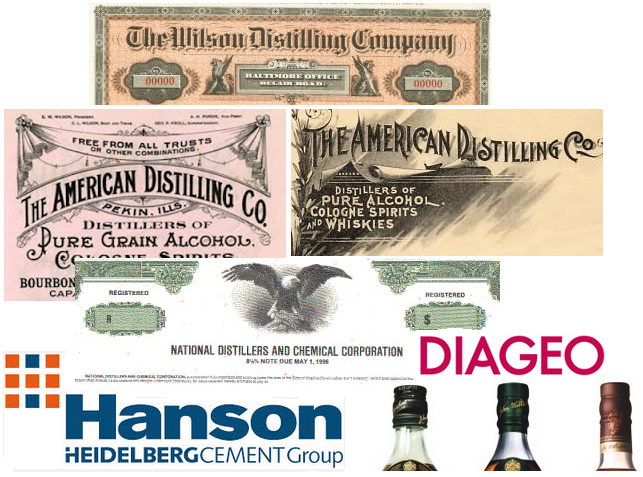
It began in 1887 as Distillers and Cattle Feeders Trust (popularily known as Whiskey Trust). The relation between whiskey and cattle feeding was that leftovers from whiskey distillation were fed to cows. It got split up to several parts. Today, it is part of a conglomerate, Diago (NYSE:DEO) and Millennium Chemicals.
Industry: Non-Cyclical Consumer Goods & Services
Sector: Distillers & Wineries Industry
General Electric
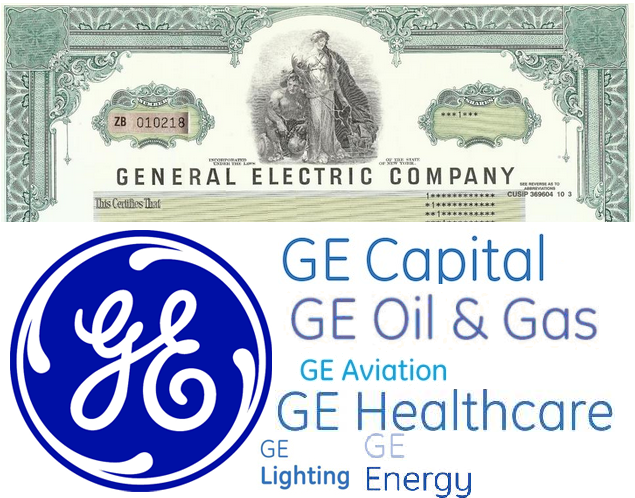
It traces its roots to Thomas Edison’s companies such as Edison General Electric and Edison Lamp Companies. It is the only company is still part of the DOW while retaining its original brand name. Today, General Electric (NYSE:GE) is a global conglomerate that produces everything from consumer goods to machinery with a staggering market cap of over $250 billion.
Industry: Industrial
Sector: Stationary Fuel
Laclede Gas Company

Pierre Laclede started the natural gas supply company in St. Louis, Missouri. Today, it’s parent company Laclede Group Inc (NYSE:LG) is a holding company that still distributes gas to over 600,000 people around the region. It’s market cap is $1.5 billion, a small company by today’s standards.
Industry: Utilities
Sector: Natural Gas Utilities
National Lead
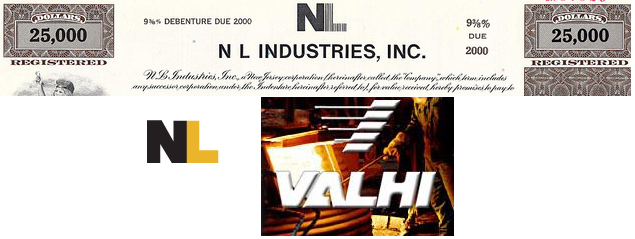
It formed 1891 after series of mergers. It’s original business was in the mining industry. It moved into the painting business and sold that off. Today it is named NL Industries (NYSE:NL). National Lead produces chemicals such as titanium dioxide, which is used things from white paint to Oreo fillings. It is mostly owned by another company called Valhi (NYSE:VHI). NL’s current market cap is just over $500 million.
Industry: Industrial
Sector: Lead components
North American Company
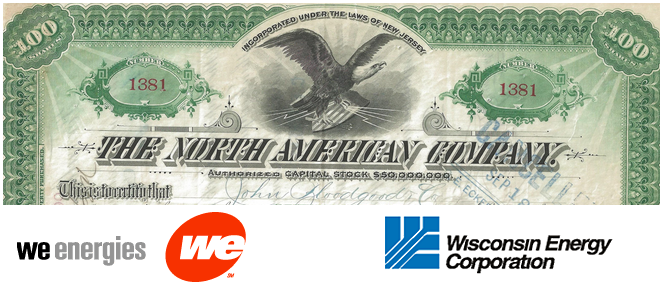
In 1896, The Milwaukee Electric Railway and Light Company merged to form the North American Company. The company used unsold electricity to power trains. Eventually, it was dissolved by federal courts into Milwaukee Electric Railway Company (publicly owned) and Wisconsin Energy Company (NYSE:WEC). Wisconsin Energy currently has a market cap of over $10 billion.
Industry: Utilities sector
Sector: Electric utilities
Tennessee Coal Iron and RR
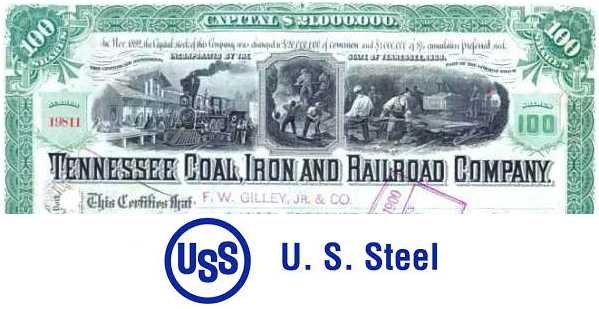
At the time, it was a major steel manufacturer with interests in coal, iron, ore, and railroad construction with a market cap of around $500 million. During the Panic of 1907, a firm that borrowed heavily using TCIRR stock as collateral went bankrupt. This caused it’s stock price to plummet. Eventually, it was acquired by US Steel (NYSE:X), it’s largest competitor. Today, after significant downsizing it’s market cap is just $3.4 billion.
Industry: Basic Materials
Sector: Steel
United States Leather Company
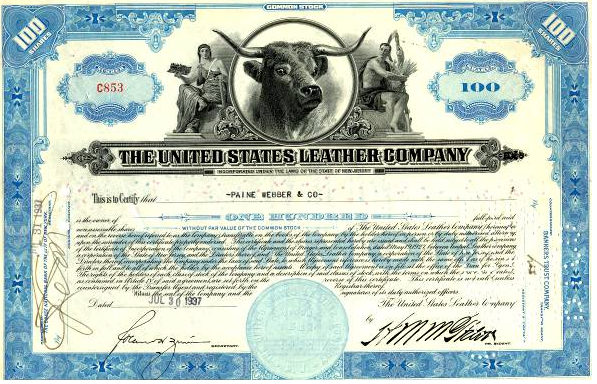
At the time, US Leather Co. was the largest leather company in the world. However, it eventually liquidated and disappeared. It’s buildings were sold off. Currently, no traces of the historical company exist.
Industry: Cyclical Consumer Goods & Services
Sector: Leather Goods
United States Rubber
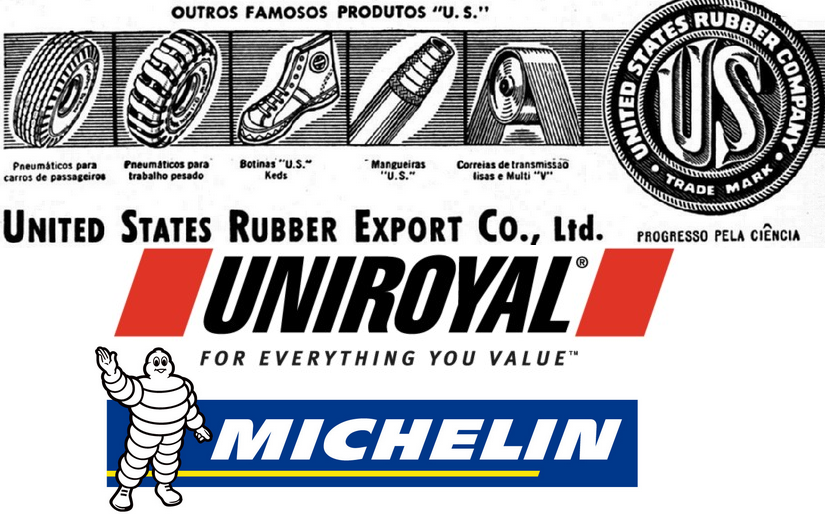
Major rubber companies consolidated together to form the United States Rubber Company. It eventually merged with Continental AG of Germany to form Uniroyal. Then, in 1990, it was finally bought out by French tire Michelin (EPA:ML). Uniroyal at that time was valued at $1.5 billion.
Industry: Non-Cyclical Consumer Goods & Services
Sector: Personal Product
Conclusion
In the early 1900s, the major components of the DOW were large resource and industrial companies. Today’s DOW is vastly different. If you went back in time and told someone back then that a hamburger parlor (McDonald’s), a shoe company (Nike), and a cartoon animation company (Disney) would become a global conglomerates and rival in size against the likes Chicago Gas and General Electric, they would fall on their knees laughing at you!
Just like if you told someone 10 years ago that a company like Facebook or Twitter would grow to be billion dollar empires, they would assume you were a lunatic!
References:
http://www.fundinguniverse.com/company-histories/bestfoods-history/
http://www.encyclopedia.com/doc/1G2-2840500145.html
http://www.moaf.org/publications-collections/financial-history-magazine/80/_res/id=File1/Article_80.pdf